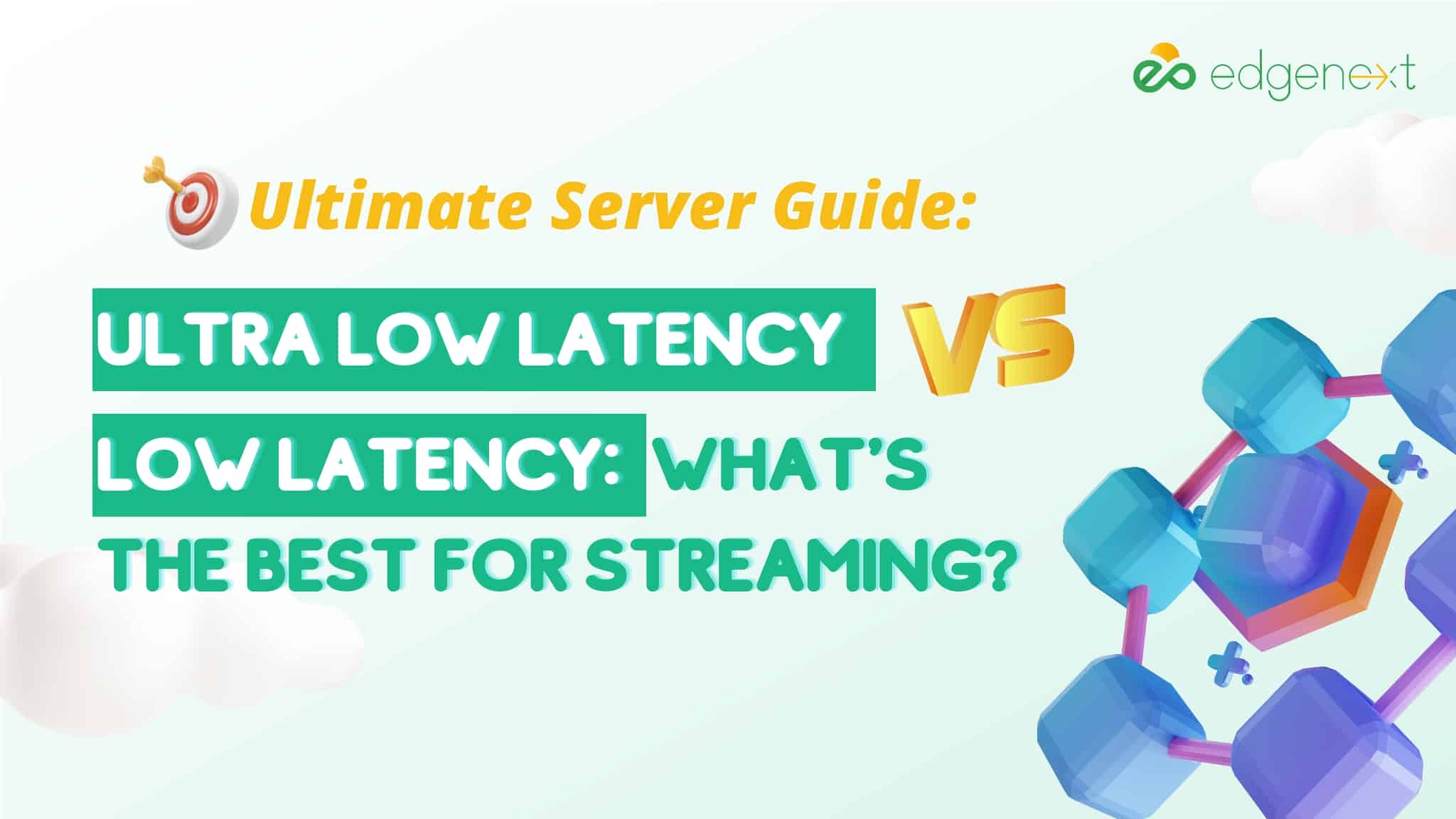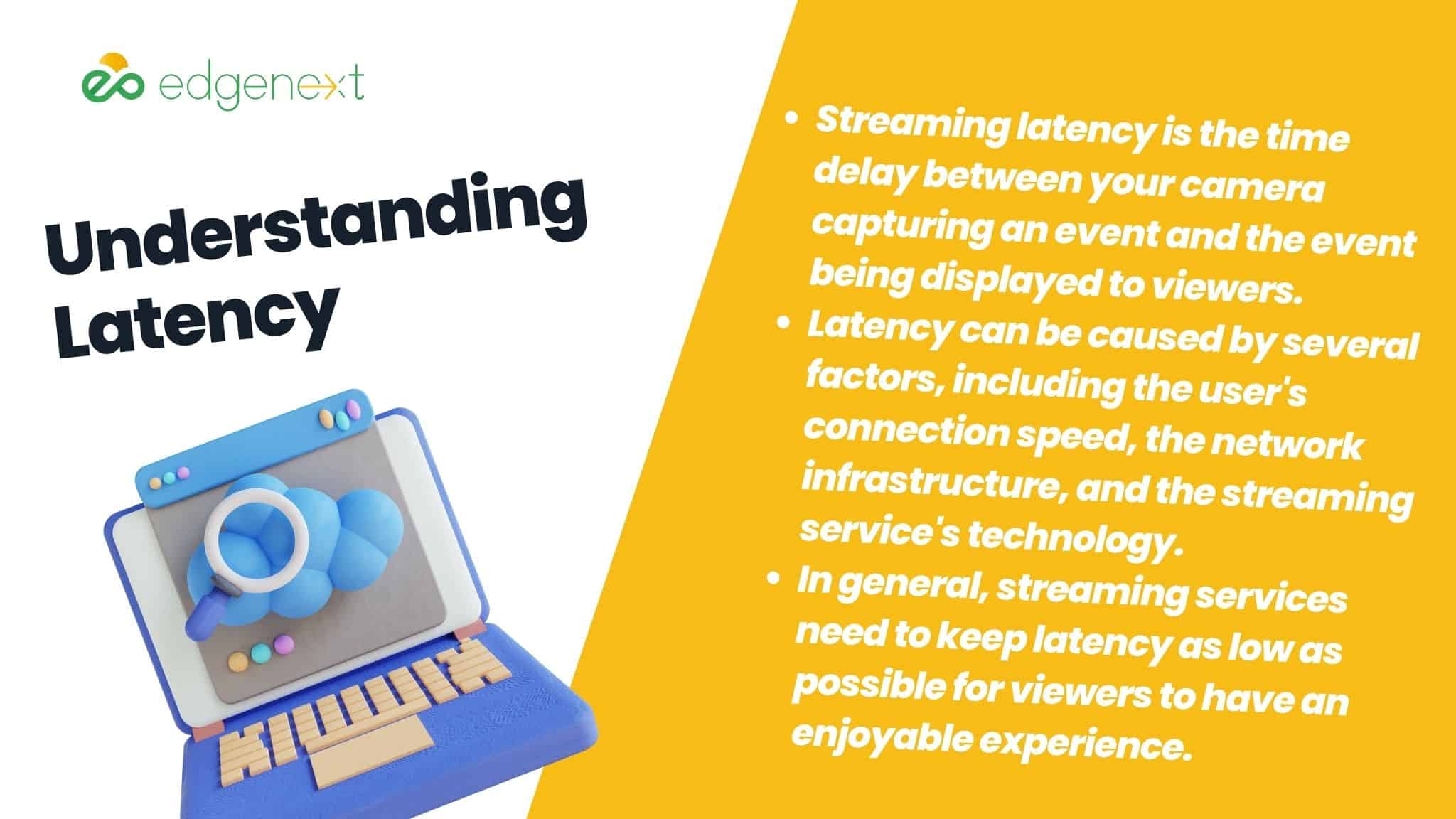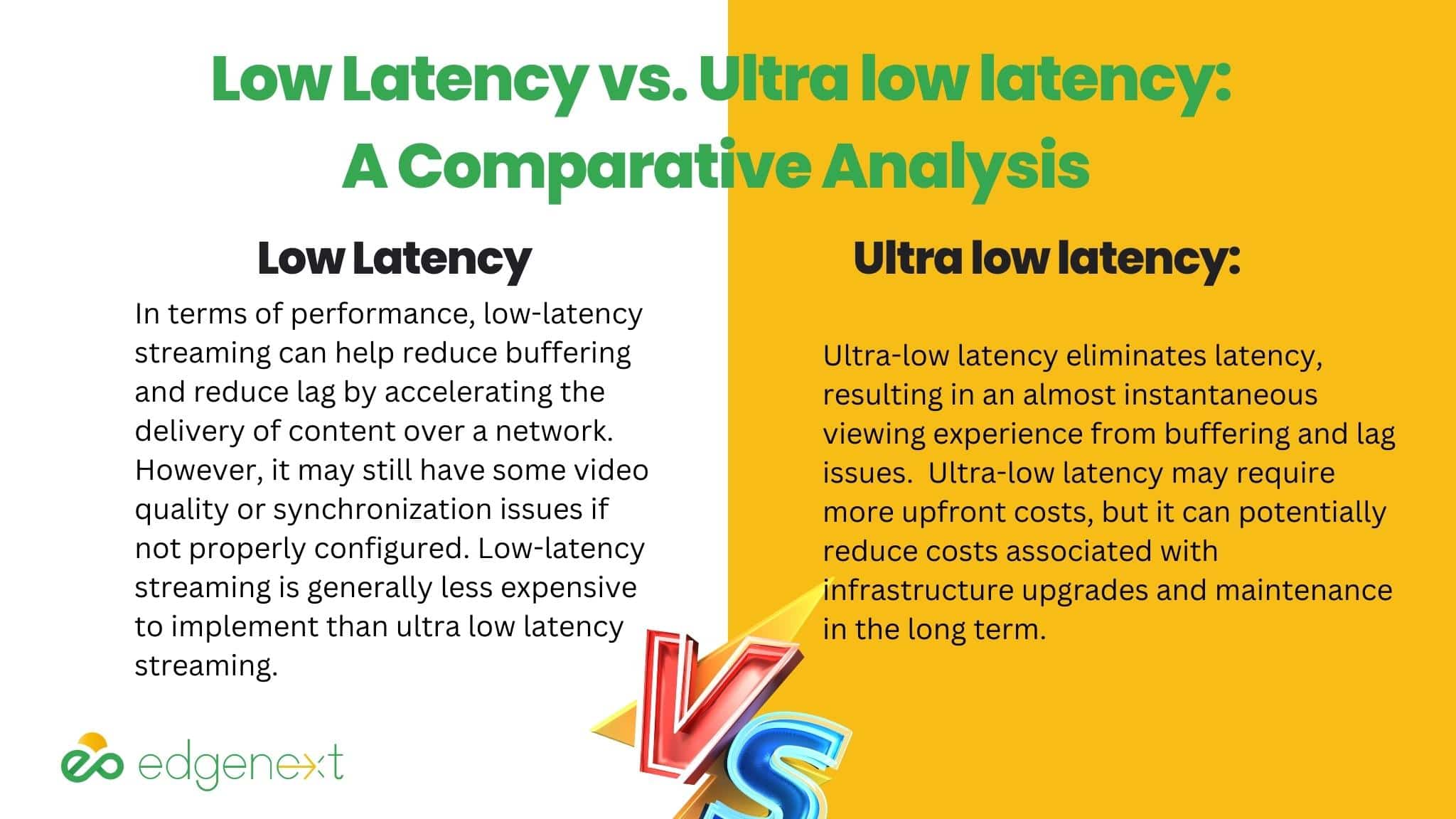
Streaming involves transmitting audio or video content over a network to be viewed by the user. For streaming services to deliver an enjoyable experience, latency is one of the most important factors to consider. Latency refers to the delay between when something is sent and received over a network, and it can significantly impact users’ streaming experiences. Low latency streaming and ultra low latency streaming are two solutions for reducing the effect of latency on streaming services. This article examines these terms and compares their benefits and drawbacks to help you know better about streaming services.

Streaming latency is the time delay between your camera capturing an event and the event being displayed to viewers. When there’s too much latency in streaming services, users experience lag or buffering that negatively impacts their viewing experience. Latency can be caused by several factors, including the user’s connection speed, the network infrastructure, and the streaming service’s technology. These can affect how quickly content is sent and received over a network.
In general, streaming services need to keep latency as low as possible for viewers to have an enjoyable experience. Low latency means that there will be a minimal delay between when content is captured and received. This can help to reduce buffering, lag, and other issues that could negatively impact the streaming experience.
Low-latency streaming is a type of streaming technology designed to reduce latency by accelerating content delivery over a network. By speeding up the transfer and reception of data, low latency streaming can help ensure that users experience a minimal delay between when content is sent and received. As a result, it’s an ideal solution for streaming services looking to reduce buffering and latency issues.
It offers several advantages, including improved user experience, minimal delay between sending and receiving content, and reduced buffering. Additionally, low latency streaming is a relatively easy solution as it doesn’t require significant changes or upgrades to existing infrastructure.
However, there are some potential drawbacks to low-latency streaming that should be taken into consideration. For instance, the technology used for low-latency streaming can be more expensive than other solutions and require additional resources to operate. Also, if not properly configured, low latency can cause problems with video quality or synchronization problems.
Low latency streaming is ideal for streaming services that need to reduce buffering and reduce lag to provide a better user experience. It can also benefit applications or services that require real-time data delivery, such as live broadcasts or multiplayer gaming. Additionally, low-latency streaming is a good solution for streaming services that don’t have the resources to upgrade their infrastructure or make significant changes to reduce latency.
Ultra low latency streaming is a type of streaming technology designed to eliminate latency. By eliminating the time between when content is sent and received, ultra low latency streaming provides with an instantaneous viewing experience free from buffering or lag issues.
Ultra low latency streaming offers several advantages – most notably, it can help improve user experience by providing viewers with an uninterrupted streaming experience. Additionally, ultra low latency can be beneficial for applications or services that require real-time data delivery, such as live broadcasts or multiplayer gaming. It also can potentially reduce costs associated with infrastructure upgrades and maintenance.
However, there are some potential drawbacks to ultra low latency streaming. For instance, it requires significant changes to existing infrastructure and applications for it to be adequately implemented. Additionally, if not set up correctly, ultra low latency can cause problems with video quality or synchronization.
Ultra low latency streaming is best suited for applications or services that require the delivery of real-time data and need a reliable way to eliminate lag and buffering. It’s also more ideal for streaming services with the resources to upgrade their infrastructure and applications to improve user experience. Additionally, ultra low latency can benefit businesses and organizations looking to reduce costs associated with maintaining existing infrastructure and applications.

Low latency and ultra-low latency streaming are two solutions for reducing the effect of latency on streaming services. When deciding which solution is best for a given streaming service, several factors must be considered. In terms of performance, low-latency streaming can help reduce buffering and reduce lag by accelerating the delivery of content over a network. However, it may still have some video quality or synchronization issues if not properly configured. On the other hand, ultra low latency liminates latency, resulting in an almost instantaneous viewing experience from buffering and lag issues.
In terms of cost, low-latency streaming is generally less expensive to implement than ultra low latency streaming. It can also benefit streaming services that don’t have the resources to upgrade their infrastructure or make significant changes to reduce latency. On the other hand, while ultra low latency may require more upfront costs, it can potentially reduce costs associated with infrastructure upgrades and maintenance in the long term.
When considering which solution to implement, assessing the specific requirements of the service in question is crucial. For streaming services that require real-time data delivery or need a reliable way to eliminate lag and buffering, ultra low latency streaming is often the best option. Additionally, businesses and organizations looking to reduce costs associated with maintaining existing infrastructure and applications may find ultra low latency more suitable. However, for streaming services that don’t have the resources to upgrade their infrastructure or make significant changes to reduce latency, low-latency streaming may be the better choice. Ultimately, in choosing between low latency and ultra low latency streaming, it is essential to consider all the factors at play and make an informed decision based on the specific requirements of the service.
In conclusion, low latency and ultra low latency streaming are two solutions for reducing the effect of latency on streaming services. Low latency streaming can help reduce buffering and lag by accelerating content delivery over a network; however, it may still have some issues with video quality or synchronization if not properly configured. On the other hand, ultra low latency eliminates latency, resulting in an almost instantaneous viewing experience free from buffering and lag issues. However, it requires significant changes to existing infrastructure and applications to be implemented correctly.
When deciding which solution is best for a streaming service, it is vital to consider the various factors at play – such as performance, cost, and requirements – and make an informed decision based on the specific needs of the service. Low latency streaming may be preferred for services that don’t have the resources to upgrade their infrastructure or make significant changes to reduce latency. In contrast, ultra low latency streaming is usually better suited for those requiring real-time data delivery or needing a reliable way to eliminate lag and buffering. Ultimately, with careful consideration of these factors, businesses and organizations can make the best decision to reduce latency and improve user experience.
If your streaming service requires real-time data delivery or a reliable way to eliminate lag and buffering, EdgeNext is here to help. Our ultra low latency streaming solutions eliminate latency, resulting in an instantaneous viewing experience free from buffering and lag issues. Contact us today to learn more about how we can reduce latency and improve user experience for your streaming service.
© 2025 EdgeNext Copyright All Right Reserved